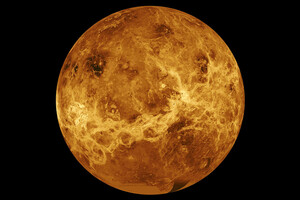Researchers believe that the planet was turned into hell by the greenhouse effect.

Scientists from Carleton University said that Volcanic activity, instead of being close to the Sun, could turn Venus into hell as it is today. It caused a greenhouse effect, which scientists believe almost ruined the Earth, according to Universe today.
To find out how often our planet has suffered from volcanic eruptions and how they have affected it, scientists have studied the appearance of traps or trap formations on Earth. These are huge deposits of rocks formed by magma, scattered around the world.
Read also: NASA will send two missions to Venus to understand how it turned into “hell”
The only way for such formations to appear is to break the earth's crust. This can happen when tectonic plates diverge or rise to the surface of mantle plumes. The formation of ladders releases many greenhouse gases into the atmosphere, which dramatically change the climate.
The formation of a single ladder takes about five million years, which they catastrophically change the climate. Such formations are associated with more mass extinctions than those caused by falls and comets or asteroids.
It is impossible to get a complete chronicle of the formation of traps on Earth due to the fact that new rocks are constantly coming to the surface due to tectonic activity. But even though the modern surface of the Earth is only 500 million years old, scientists have been able to find traces of traps deep in the earth's crust.
Research has shown that some trap formations seem random. It is unknown why several ladders could form at the same time. In addition, scientists have suggested that one trap formation event does not change the Earth's climate forever, because our planet has survived several formations, but has maintained climate stability.
However, the formation of ladders can affect the Earth's climate, raising the temperature sharply due to the greenhouse effect. Some of these events do coincide with each other.
Several parallel processes of trap formation can completely destroy the planet. If a lot of them are formed at the same time, a lot of greenhouse gases are released into the atmosphere. If the atmosphere retains a lot of heat, the oceans begin to evaporate. The more water in the atmosphere, the more heat it retains, thereby heating the oceans. The cycle continues and continues, eventually leading to the “thermal death” of the temperate world.
Probably this is what happened to Venus, and Earth was able to avoid this fate. Scientists are aware of traces of volcanoes on the neighboring planet, but do not know how many of them were erased by weathering or tectonic activity.
. In the future, scientists intend to find out how many such events must occur in order to reach the turning point that follows the catastrophe.




